
Kreuzberg is a very peculiar Berlin neighborhood. It’s a place mostly loved by hipsters, street artists, LGBTQ+ members and allies, and “rebellions” of all sorts. It’s also one of the most culturally diverse neighborhoods of the city.
Tourists usually come here to get a taste of the bohemian lifestyles of Berliners. Even though it might seem too marginal or unsafe in some areas, Kreuzberg is still iconic. And that’s why you should certainly put it on your travel itinerary.
Article contents
- Some words about Kreuzberg
- 10 places you shouldn’t miss
- Where to eat in Kreuzberg?
- Our list of reasonably priced hostels and hotels
What is Kreuzberg in Berlin Known For?
Kreuzberg used to be known as a Turkish quartier of the city and the poorest part of West Berlin. But in the 60s, the bohemians started to settle here because of low housing prices. The rest is history — now Kreuzberg is the trendiest and quirkiest district of the city. As I mentioned before, this neighborhood is very diverse. If you don’t want to get lost during your Kreuzberg sightseeing adventure, here are some tips from us you should remember and notable locations to put on your itinerary.
10 Places to Visit in Kreuzberg
 |
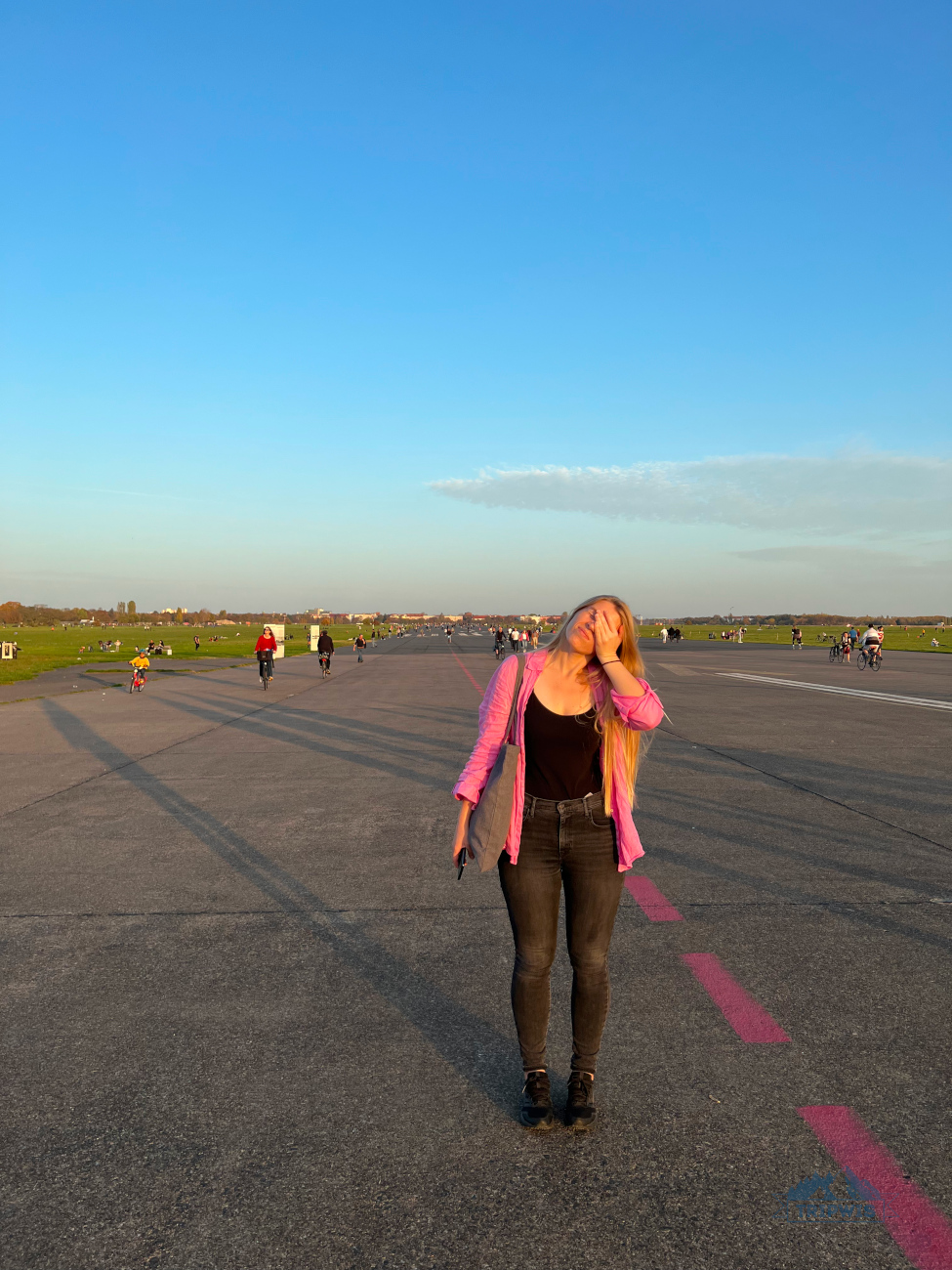 |
The history of Berlin is literally a sea of never-ending information to dive into. But if you’ve come unprepared, Kreuzberg is there for you to learn the history right on its streets — through the sites left from the world-shaking events of the 20th century.
East Side Gallery

This gallery can probably serve as the overture to your tour around the neighborhood. It is often listed in the “Top Things to Do in Kreuzberg” itineraries.
Here is why — the gallery is a good place to learn about the historical context of the city through the street art scene. Right after the fall of the Berlin Wall, many artists felt the urge to turn the ruins into art and painted the Wall with colorful graffiti. And that was the beginning of the East Side Gallery.
The gallery is free to enter and open 24/7. The best way to explore the space is by starting from Schilling bridge and finishing at the iconic fraternal kiss of Soviet leader Leonid Brezhnev and East German President Erich Honecker.
The neighborhood has no shortage of other must-see Cold War sites to visit, but the rest of Berlin doesn’t pale in comparison to Kreuzberg: Make sure to check out our guide on most notable landmarks that still bear the burden of carrying the heavy history of the Cold War era.
Oberbaumbrucke
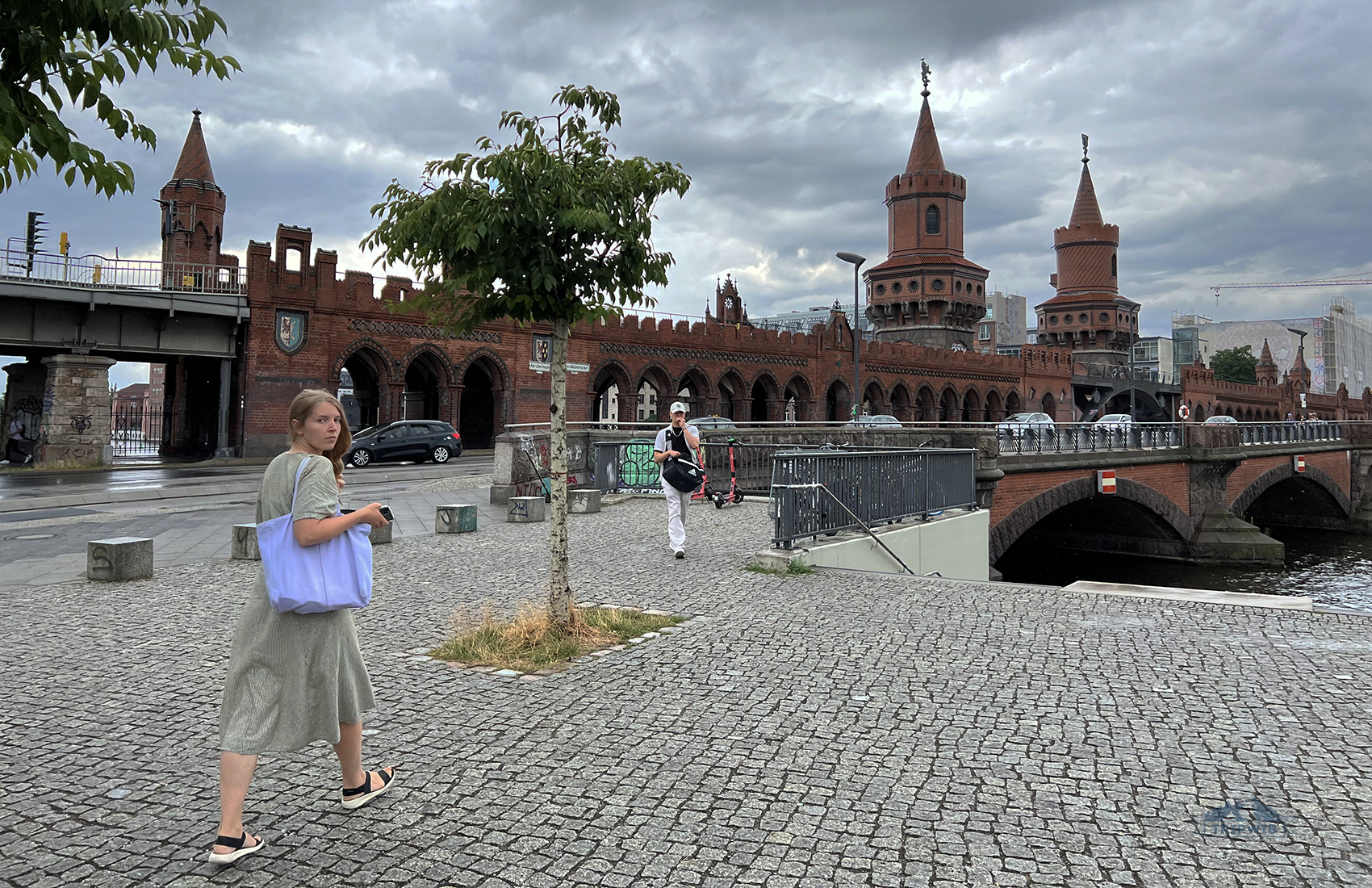
This is a bridge, and it used to be a border crossing between East and West Berlin. Now, it connects two halves of Kreuzberg neighborhood. Naturally, this landmark has a symbolic meaning for the locals: It represents the unity of the city. It’s also considered to be one of the most beautiful bridges in Europe and has a great view for some memorable photos.
Right after crossing Oberbaumbrucke, you get to the party street of the district. So if you walk around in Kreuzberg at night, be ready to see some tipsy people here and (just in case) keep an eye on your belongings.
Nightlife of Kreuzberg
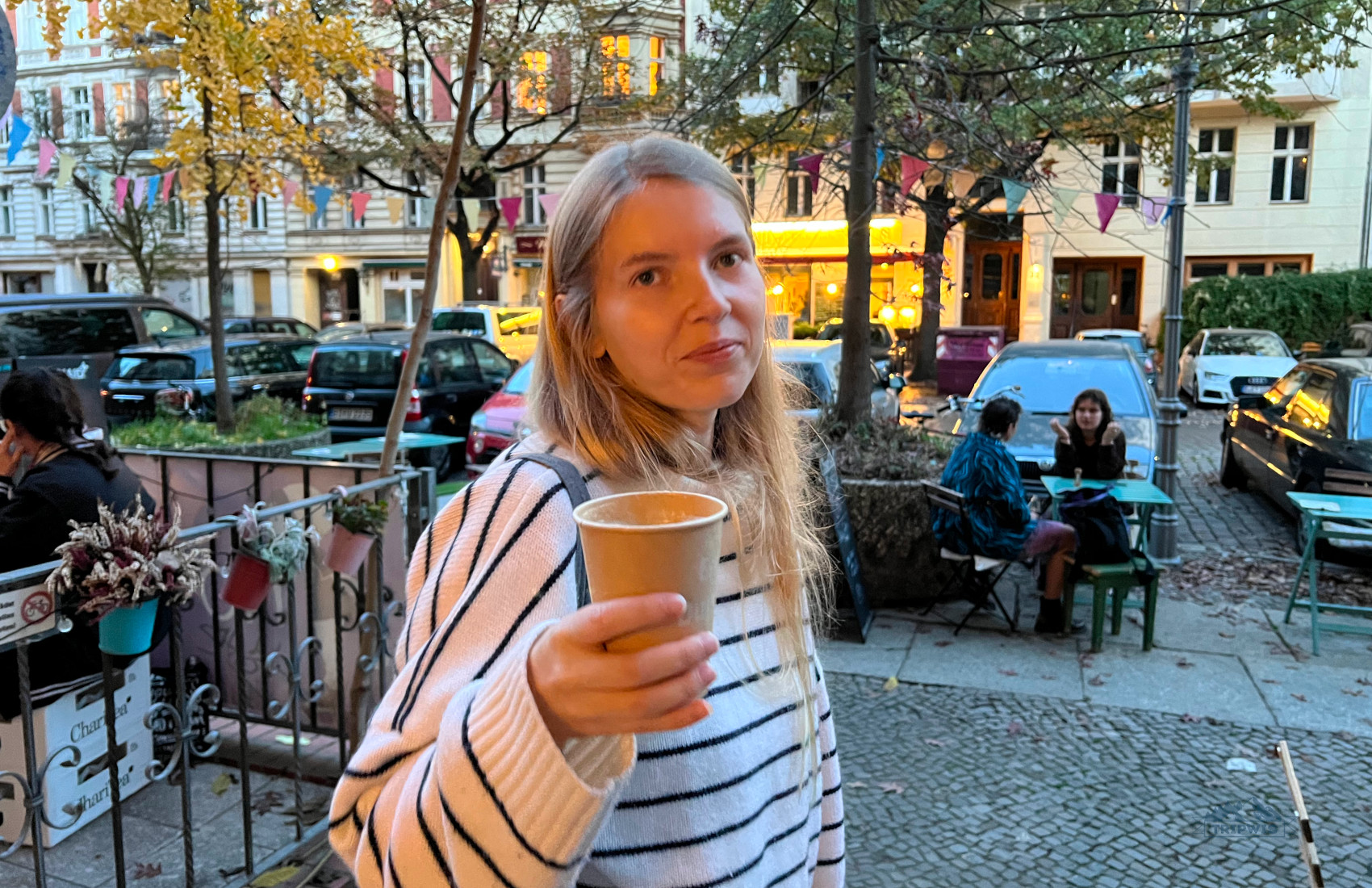
If you want to get to know the nightlife in Berlin, Kreuzberg would be a great choice. The district is famous for its authentic and diverse bars and clubs.
Here is my favorite route for a night out in this area:
- Start your barhopping in the heart of Kreuzberg — Kottbusser Tor metro station. There are some cool bars here: Multilayerladen and Bohnengold. The first one used pallets instead of chairs for guests to sit, lay and even swing.
- Then get a taste of real German craft beers in Hopfenreich, which is situated pretty close to the Oberbaumbrucke.
- Finally, find your way to Club der Visionäre, a riverside club with excellent techno music and simple interior.
Checkpoint Charlie
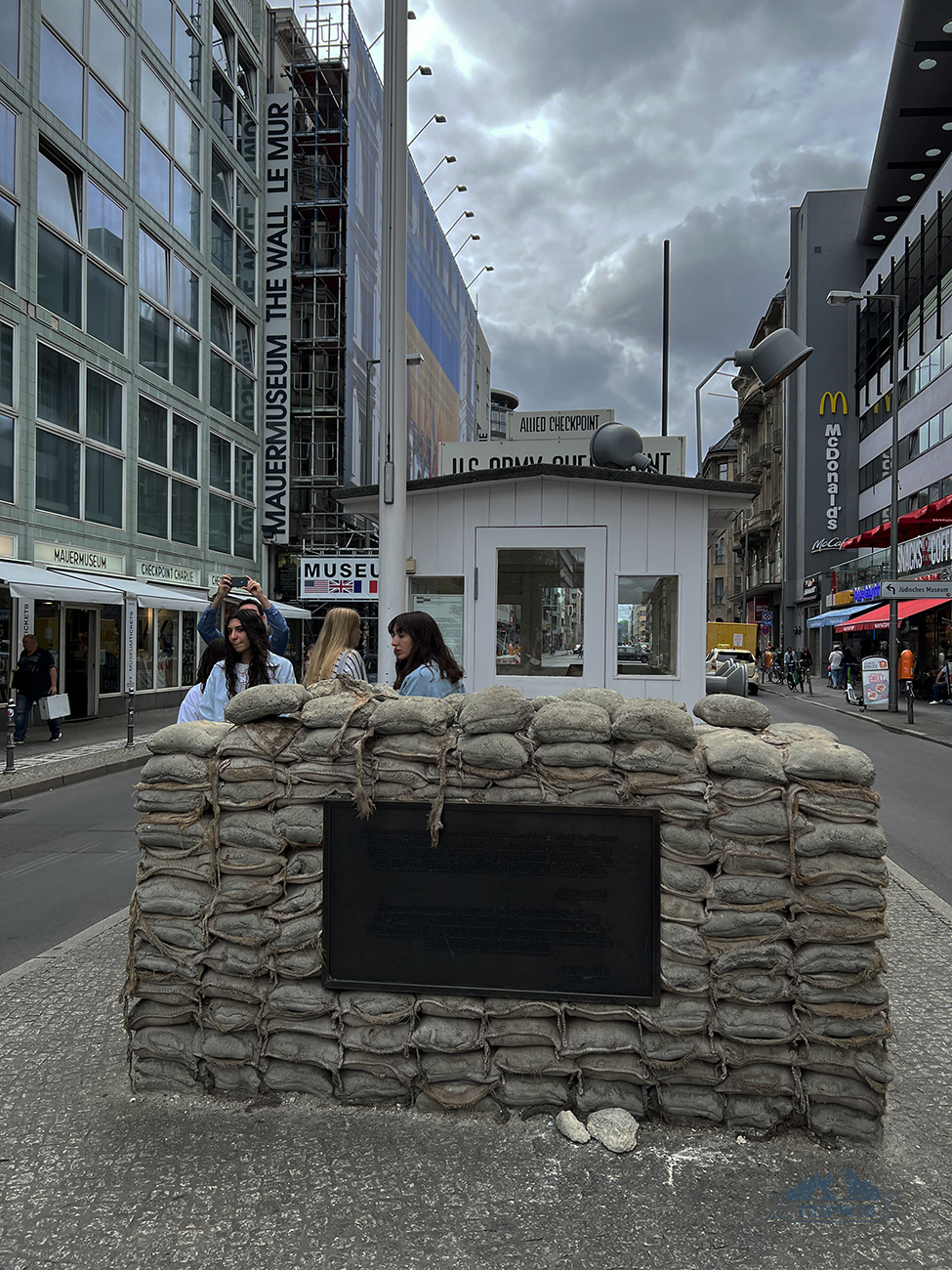 |
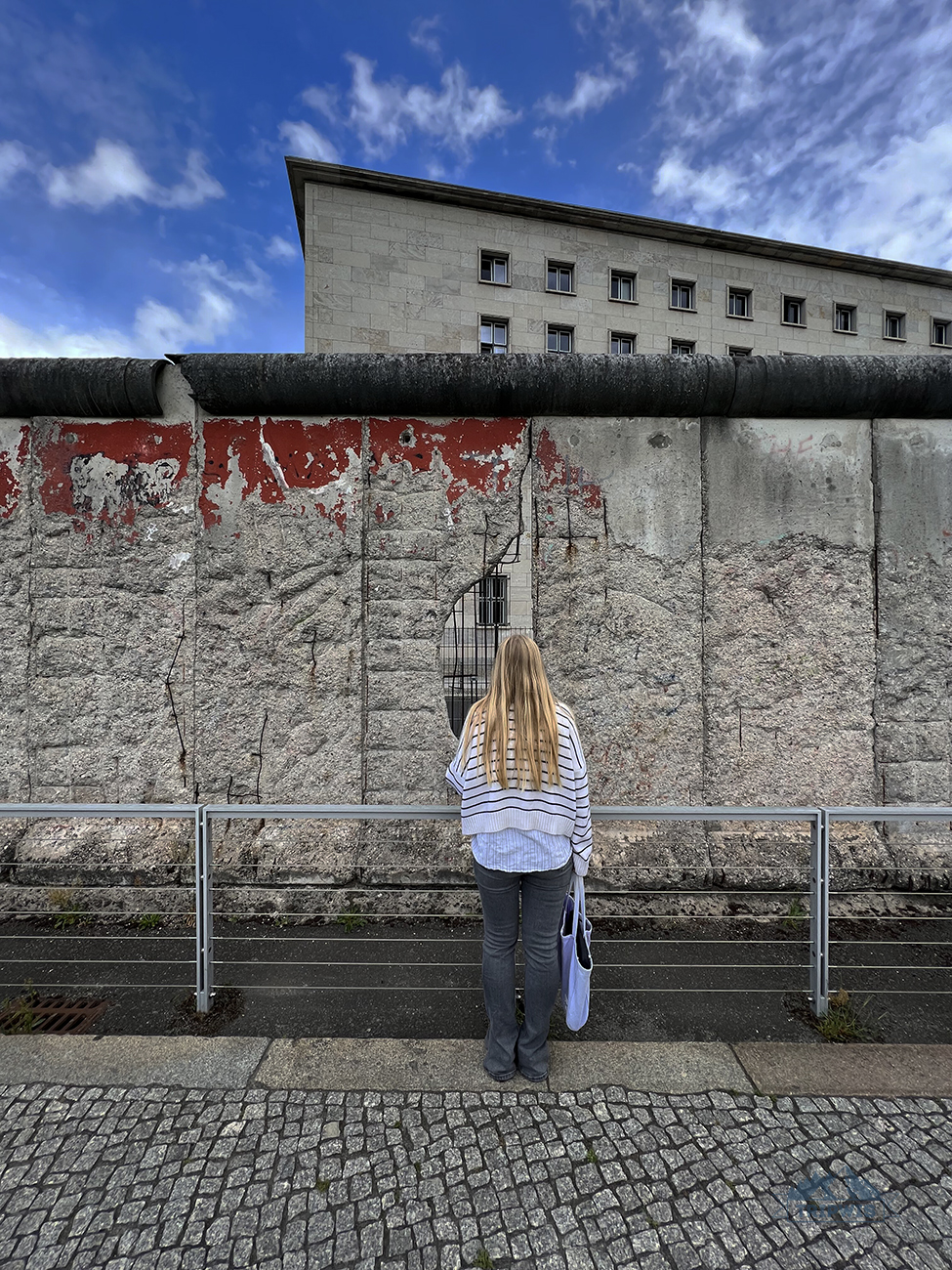 |
Visiting the Checkpoint is probably one of the most popular things to do in Kreuzberg and in Berlin in general. It’s an important symbol of the Cold War that used to serve as a border between East and West Berlin.
Now, it is a replica version of the guardhouse. Taking a photo with it will be challenging: There is some pretty heavy foot traffic in the immediate area. If you want to learn more about the Checkpoint and the history of the divided city, there is a museum and an open-air memorial dedicated to that period of time nearby.
German Museum of Technology
 |
 |
The Museum of Technology is the most child-friendly thing you can do at Kreuzberg. It’s known for its fun and hands-on tours on the history of technology. You’ll get to see the world’s first computer and vintage locomotives and learn the fundamentals of science via different experiments. We even included it in our review of 10 best museums in Berlin!
The museum is open to visitors Tuesday through Friday from 9:00 AM to 5:30 PM, and on Saturdays and Sundays from 10:00 AM to 6:00 PM. Please note that it remains closed on Mondays. The regular ticket is €12 and the reduced one is €6. Younglings under 18 can get in for free.
Jewish Museum Berlin
 |
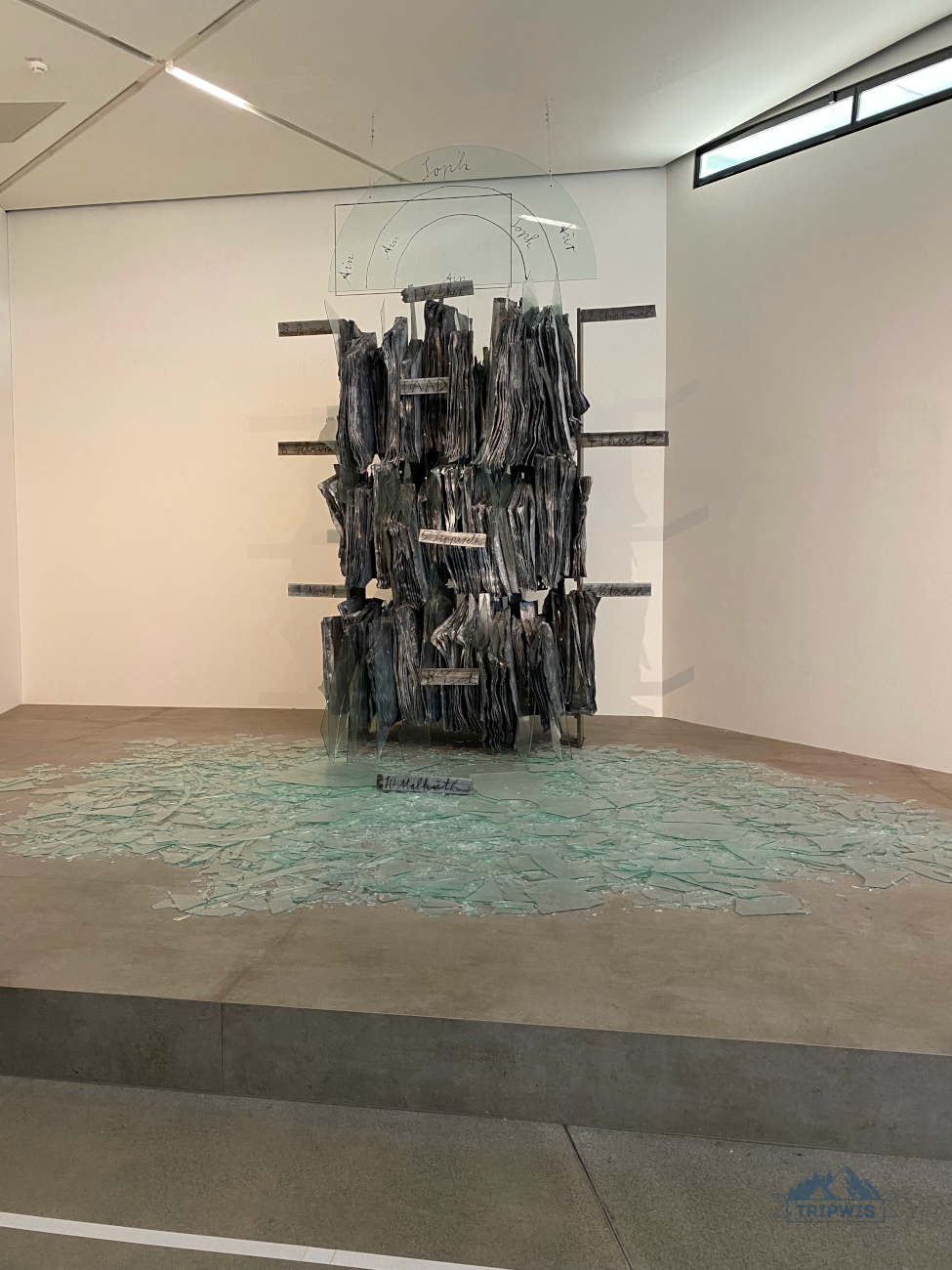 |
This museum is often overlooked by tourists, which is a pity. First of all, it’s one of the most magnificent examples of modern architecture in the city. But it also might be one of the greatest museums you’ll ever visit.
The exhibitions are well-curated and will offer you a very immersive, sometimes even frightening experience. The most impressive installation is called Fallen Leaves, but I have to warn you: You might get very emotional walking through it.
The museum is free to visit, but it’s better to book the time online in advance. Opening hours are from 10 a.m. to 6 p.m.
Mustafa’s Gemüse Kebap
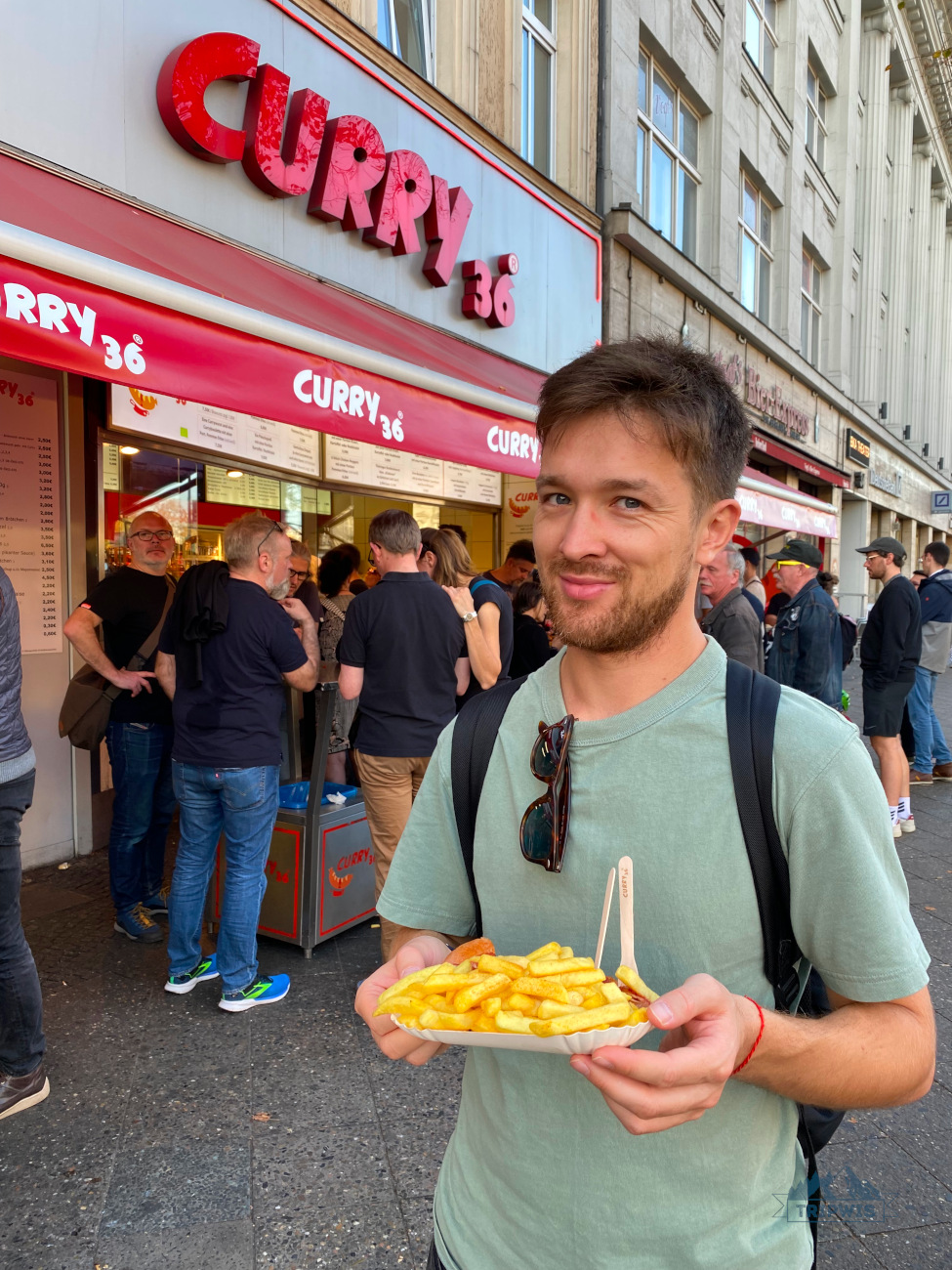 |
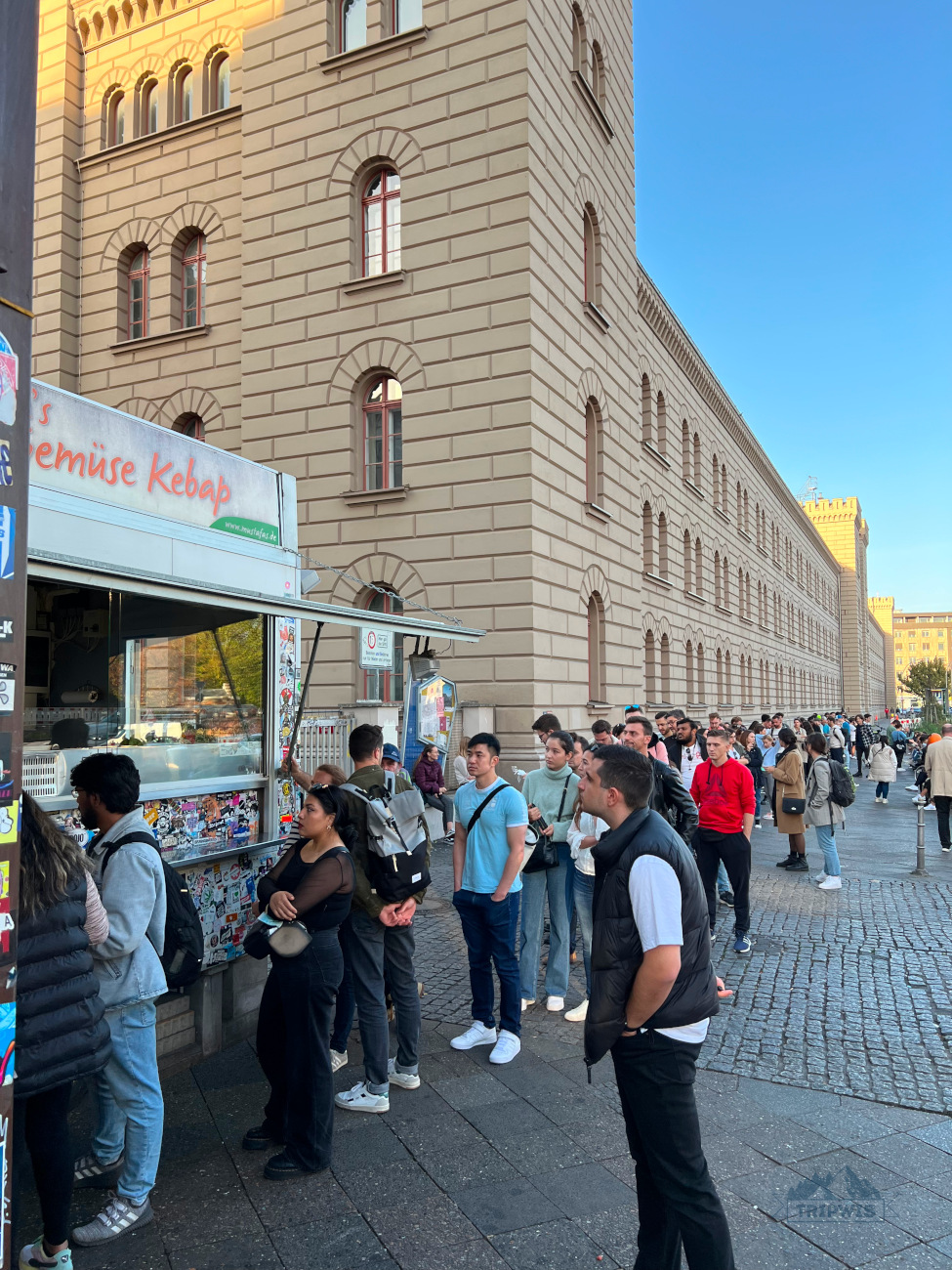 |
This doner stall is such a legend around the city that it deserves a spot on the list of things to do in Kreuzberg, Berlin. Even though Mustafa’s is just a food truck, there is always a 30-plus minutes line of people in front of it. It has become a cult favorite after introducing a twist on traditional kebab culture.
Is it worth queueing for? Definitely. Visiting Mustafa’s is not just about food, but the overall experience. I highly recommend you opt for “dürüm” (€8.3) which is served in a perfect laffa bread. There is a vegetarian option as well!
Graffiti Walks
 |
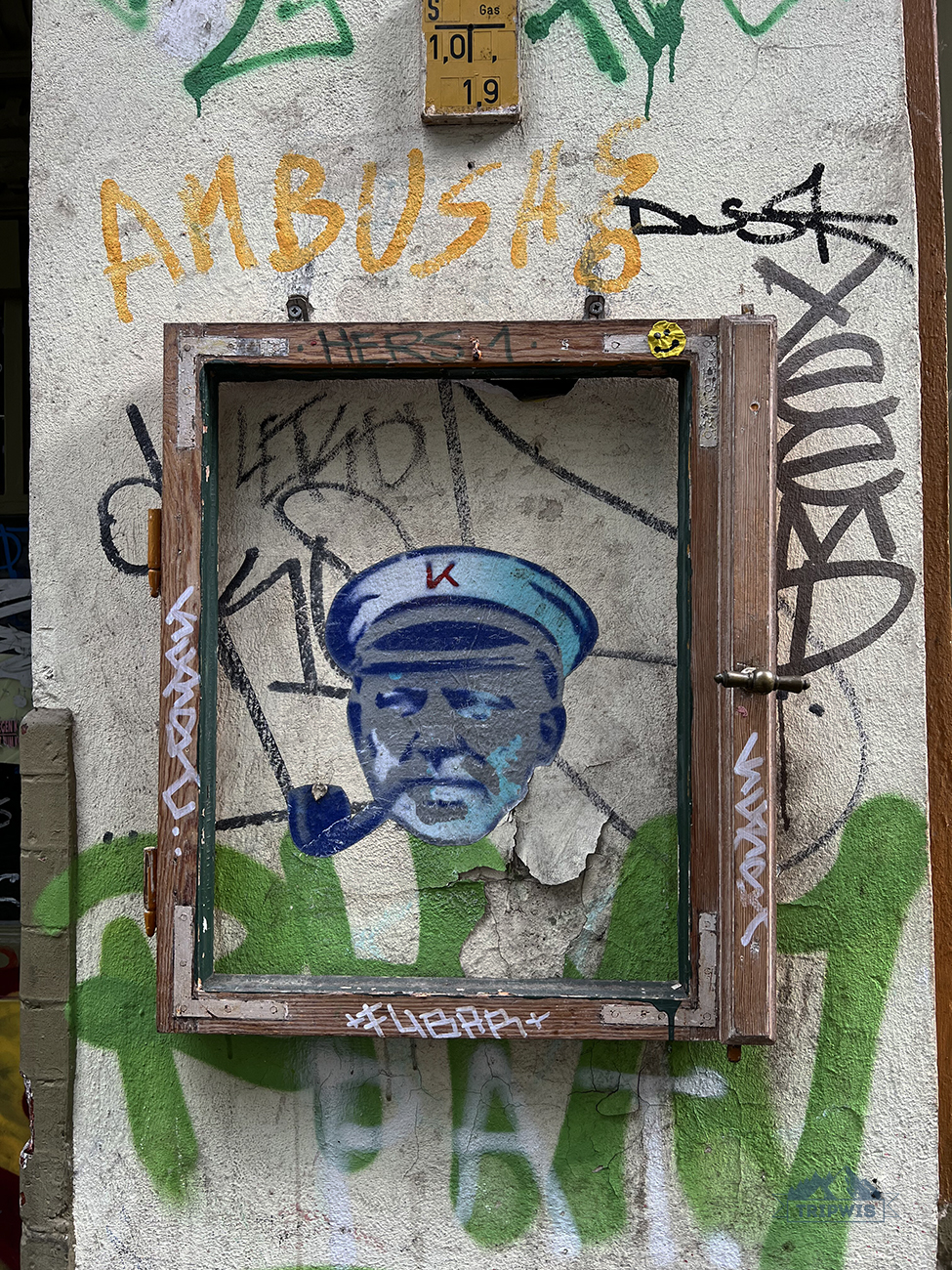 |
Kreuzberg is considered to be the heart of the street art scene in Berlin, which means that there are graffiti paintings worth seeing all over the district.
You can walk around and look for the murals by yourself. There are tons of them, but some of the most renowned ones are featured in different maps made by street art enthusiasts.
The other option is to get a local guide to tell you about the street art scene and maybe save you some time.
Tempelhof Feld
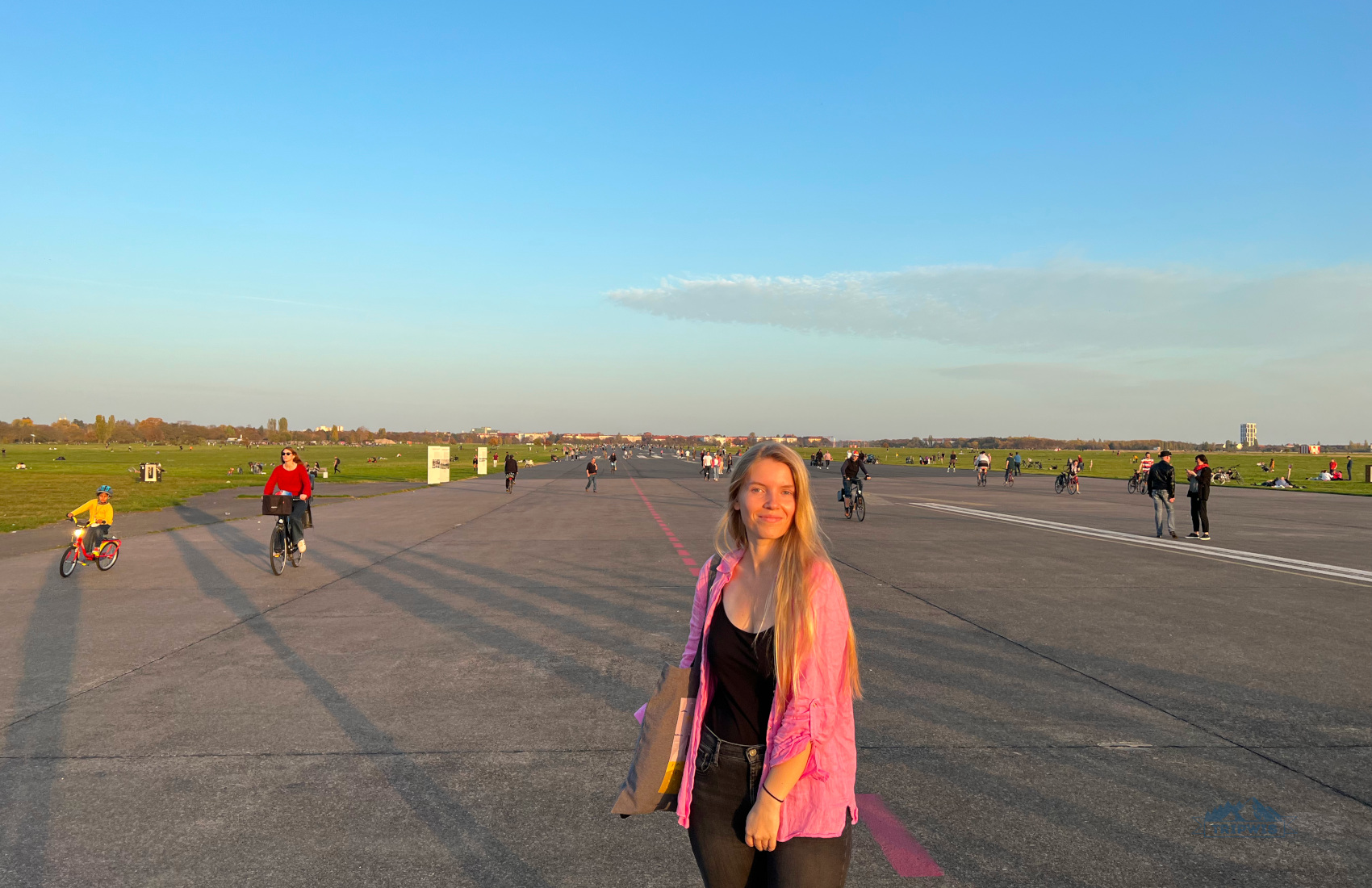
Tempelhofer Feld is a new name for a huge airport which was shut down in 2008. Now, it’s a wonderful public park with many things to enjoy.
The locals come here to hang out, cycle, skateboard, and even grow lettuce and carrots. It’s one of the best venues to fly a kite with your kid and have a family day off. This place is also great for those curious about things to do near Kreuzberg in Berlin — the park is situated right outside the district.
Where to Eat in Kreuzberg?
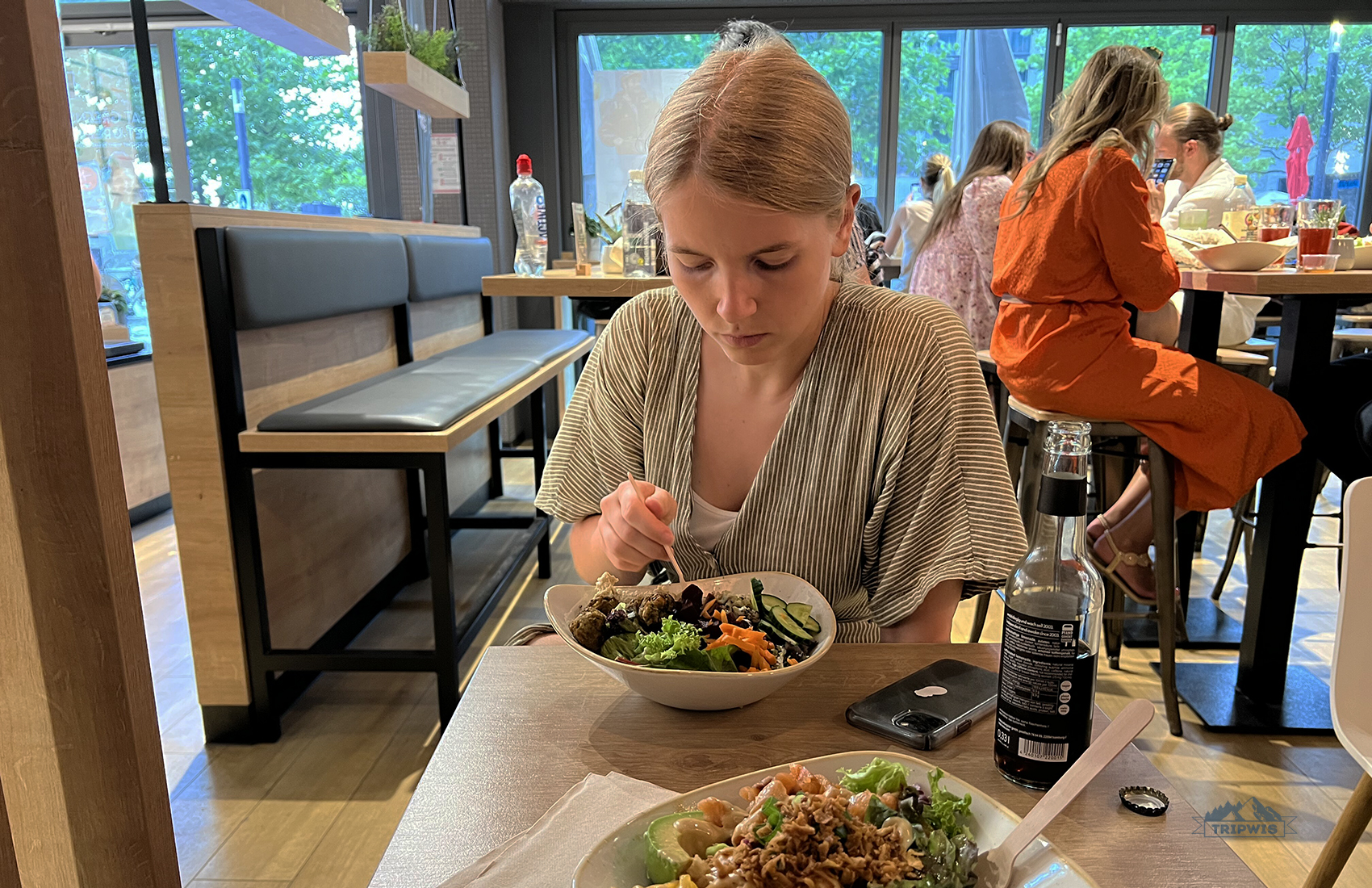
Kreuzberg has to offer not only many cultural discoveries, but a bunch of different cuisines as well. Turkish, Arabic, Italian, Korean, local dishes — you name it and the neighborhood has probably got it.
Here is our list of great places to eat in Kreuzberg:
- Markthalle Neun is a huge indoor market with dozens of vendors from all over the world. This place is a must-visit for any street-food lover. There are several craft beer and wine booths which would be a great bonus to your food discoveries. Big Stuff Smoked BBQ is usually praised by foodmall regulars for its excellent €12–€24 priced meat plates.
- Il Casolare has the best Italian pizza in the city, costing about €11–€15. A homey atmosphere with the chef greeting the guests comes as a bonus. Might be packed to the gills in the evening, so if you definitely want to get in, book a table in advance.
- Yarok is a great place to get a taste of Syrian food. It’s located right next to Checkpoint Charlie and serves phenomenal falafels. The prices here are very reasonable (€5,5–€15) which makes it a perfect lunch spot.
- Coda is a two-star Michelin restaurant. The extraordinary fine dining menu here is worth every penny you’ll spend on it (from €264 from Wednesday to Thursday and €294 on Friday-Saturday for the entire deal). Each dish is served with a mini-cocktail (both alcoholic and non-alcoholic options available).
- DUO is said to be the best gelato place in the neighborhood. All of their ice-creams and sorbets are made by following a traditional Sicilian family recipe and sold for €2,4–€6,2.
- Albatross Bakery creates the pastries that will blow your mind with both the way they look and taste. If you can’t choose, go with their almond croissant (€4.2), Queen A (€3.5) or apple danish (€3.5).
- Annelies and Hallesches Haus are a couple of awesome breakfast spots, where you can start your day with the €13 sandwich. The first one serves their breakfast all day and actually offers some of Albatross’s pastries as well. Hallesches Haus is a cafe and a store where you can find a lot of cool stuff for your home.
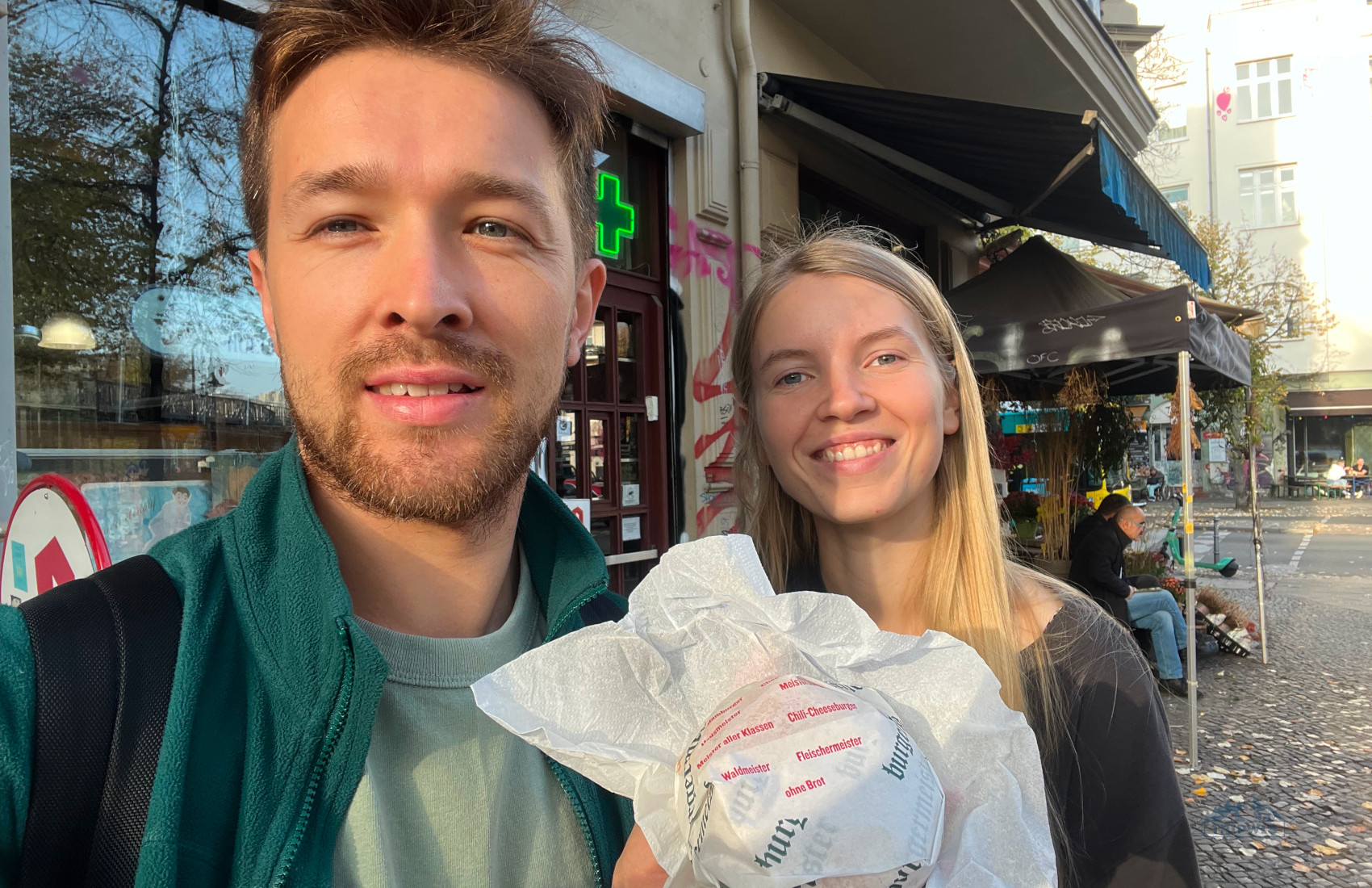
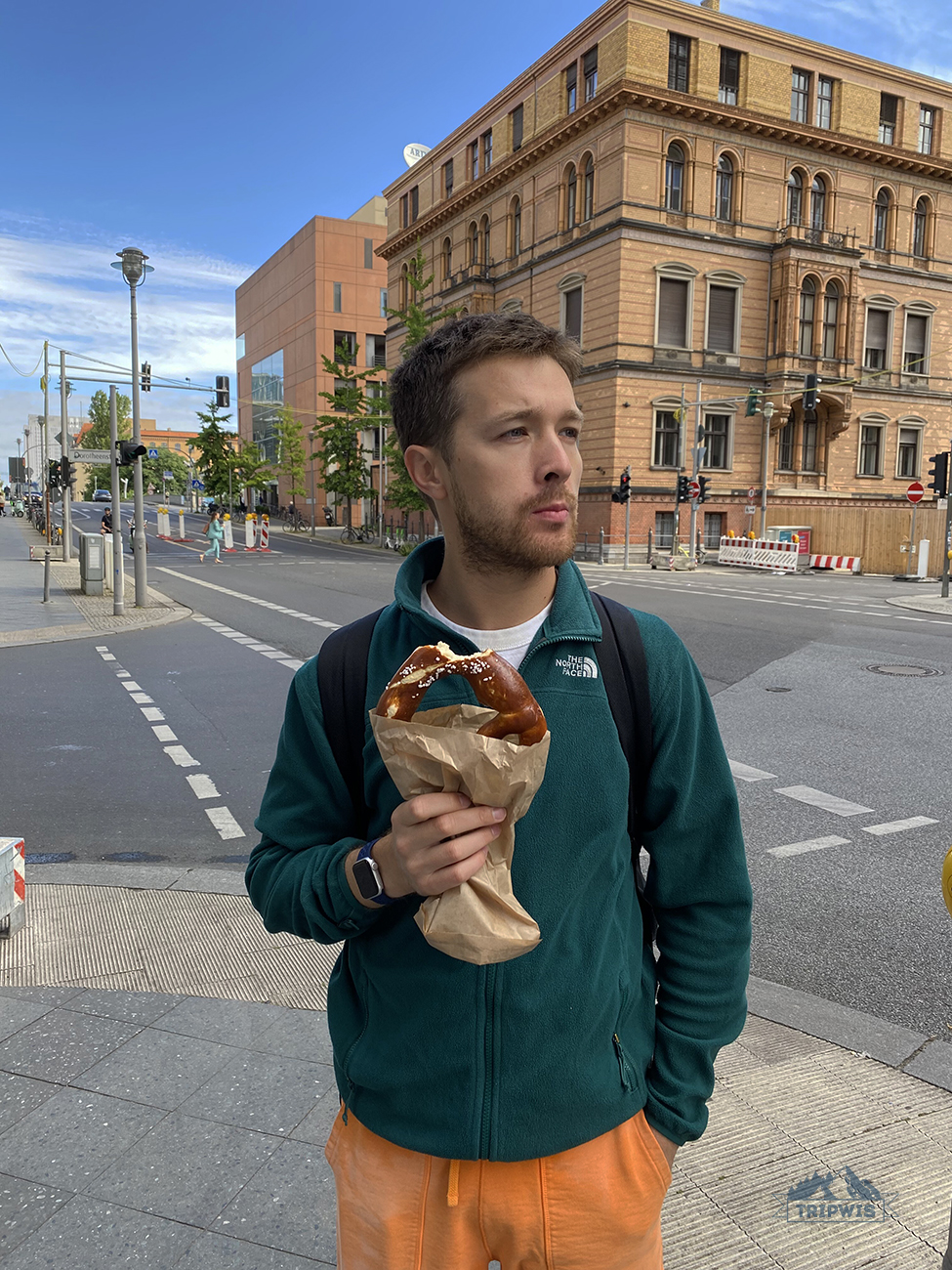 |
 |
Kreuzberg is heaven for coffee-lovers as there are so many specialty coffee shops here. Five Elephant is a small chain of micro-cafes that is also famous for its cheesecake. The Visit Coffee & Eatery is another popular chain that even gives workshops on roasting. THE BARN Café Neukölln has a cool space with a big communal table. Bonanza Coffee Roasters is a huge coffee shop with such a variety of blends that you might spend an hour choosing what you want. The average cost for a latte in Berlin is €4.5–€4.8.
Where to Stay in Kreuzberg Berlin?

If you are looking for a place to stay in Berlin, accommodation in Kreuzberg might be a good alternative to the hotels in the city center. The prices here are not that different in comparison to other neighborhoods, but you’ll most likely live in a place that has more character and outdoor space.
Traveling to the city center is easy: There are lots of U- and S-train stations in the area. The ticket costs €3.8 per ride or €10.6 for 24 hours.

Here some accommodation options you might want to consider:
- Huttenpalast works great for travelers seeking memorable vacations. The hotel offers houses-on-wheels or tiny cabins instead of rooms with shared bathrooms (from €95). There are also usual rooms with private utilities (from €105).
- Three Little Pigs Hostel is a good idea for those looking for something cheaper, but still in the city center. The hostel offers both rooms with private bathrooms (from €115) and beds in female and mixed dormitories (from €28).
- Die Fabrik is a good choice for both single travelers and families. This place has a range of rooms from well-designed private ones (from €82) to dormitory-style accommodation (from €30). It used to be a factory built in the 1900s which means you’ll get to enjoy high ceilings and spacious common areas.
- 4* art’otel berlin mitte (from €135) is situated in Mitte district, next to Kreuzberg, but has a very cool concept. The whole space is dedicated to Georg Baselitz’s art and is designed accordingly. As a guest, you can even attend a tour and learn about the artist’s projects in detail.

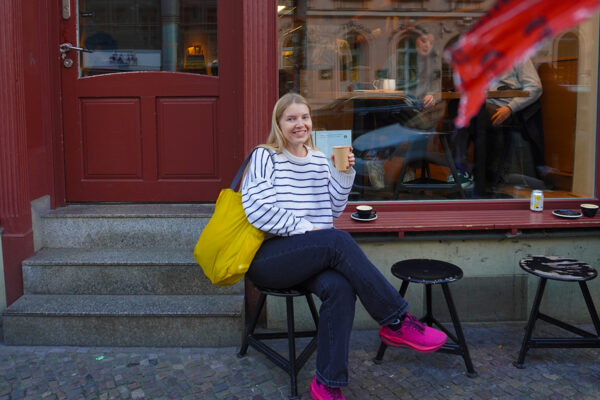
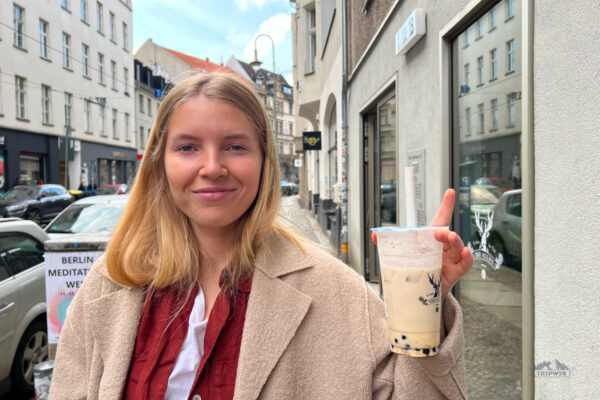
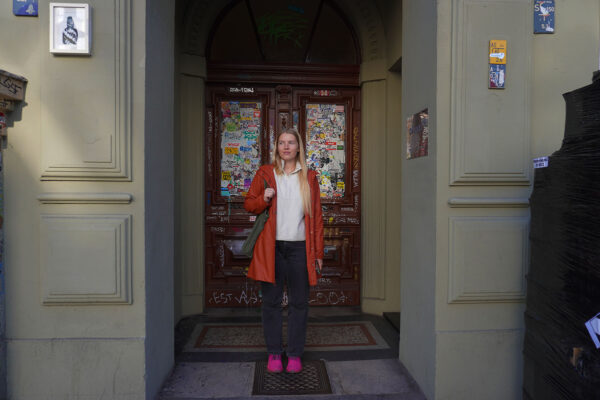
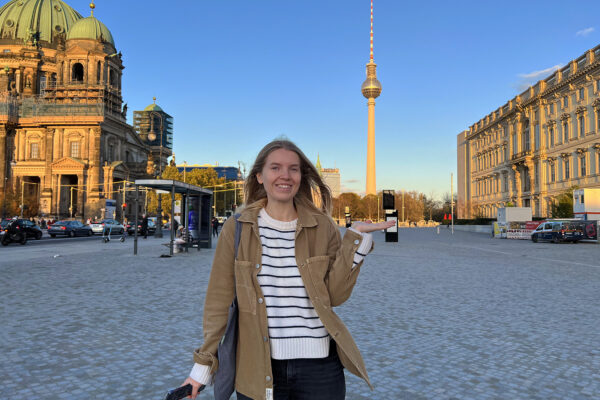
Thanks for a great article! I have a question: if I have only one day in Berlin, which of the Kreuzberg cold war sites should I visit – East Side gallery or the Checkpoint?
Hi! We’re glad we could be of help! As for your question, personally, we would spend the limited amount of time we have discovering the unique art works of the East Side Gallery. Checkpoint Charlie has become a total tourist trap, and a visit to the site will not feel as important, at least history-wise.
However, if you feel like broadening your horizons a bit (and have a couple of hours to spare), there are a few museums that are definitely worth a gander: The DDR Museum and BlackBox Cold War Museum being the first ones that come to mind. Check out our Berlin Cold War Sites guide to get a deeper understanding of the topic.